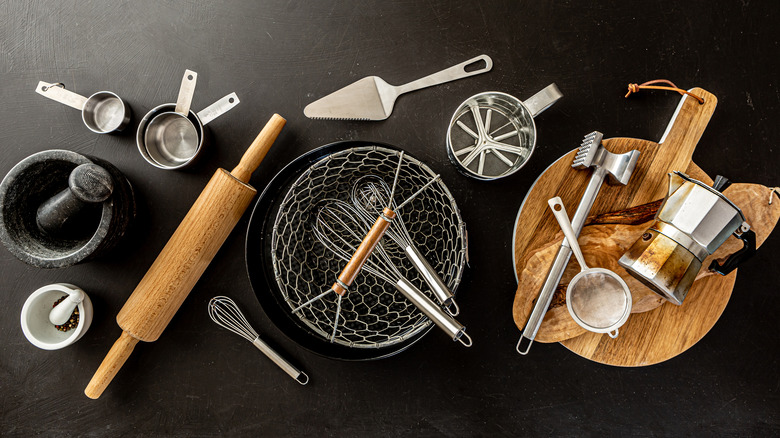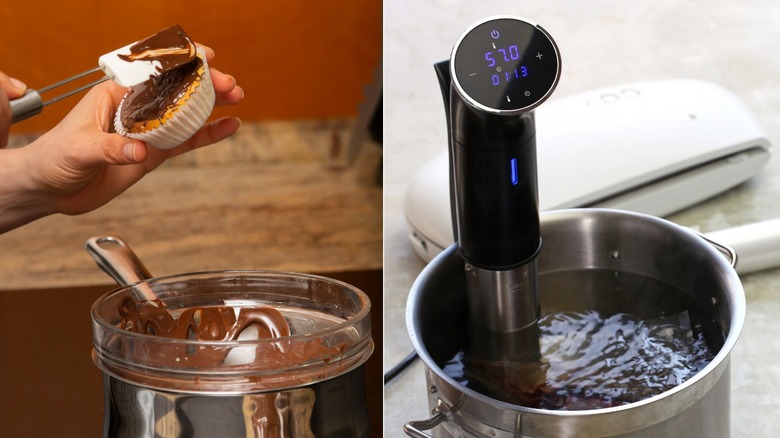What's The Difference Between Bain-Marie And Sous Vide
Cooking and baking are a science. Therefore, with scientific revolutions, we see better methods of food preparation take the world by storm. For example, the refrigerator changed how long we could keep foods and what meals we could have readily available. This advancement in science, in turn, completely changed our diet and available nutrition. Sometimes an invention is a little less grandiose. For example, the whisk is a super useful tool that now allows us to indulge in meringues and whipped cream.
Kitchen inventions truly make a difference in how we experience our food, and the bain-marie and sous vide are no exception. Sous Vide Wizard differentiates a bain-marie from sous vide by the cooking method. Ultimately, the bain-marie involves a water bath placed in the oven, while the sous vide uses a water bath machine to cook food. Both have changed the game when it comes to mindful cooking.
Water is power
The bain-marie (aka Mary's bath) was invented by Mary the Jewess around the 3rd century, according to MasterClass. The bain-marie is a hot water bath that is placed in the oven along with your bake to create steam. The steam will slowly cook the batter from all sides and cultivate an even bake. This process is perfect for delicate sponge cakes, cheesecakes, and custards. MasterClass points out that you may also use a bain-marie to melt chocolate or tricky sauces by placing a bowl in a pot filled with hot water, thus working as a double boiler. This, again, prevents direct heat from ruining your food.
The sous vide (aka under vacuum) is a new invention when compared to the bain-marie. Created in 1971 by French chiefs Bruno Goussault and George Pralus, the sous vide is a device that heats and circulates water. Food Network says that the sous vide makes overcooking your food highly unlikely due to the fact that the machine holds the water at a specified temperature. It will not dip over or under that temperature. Like a bain-marie, it ensures slow and methodical cooking, which allows the food to absorb flavors and become tender. All you have to do is place your foods (this process is most commonly used on meats and veggies) into a sealed sous vide bag with your seasonings and ingredients and set the device to suit your needs.

